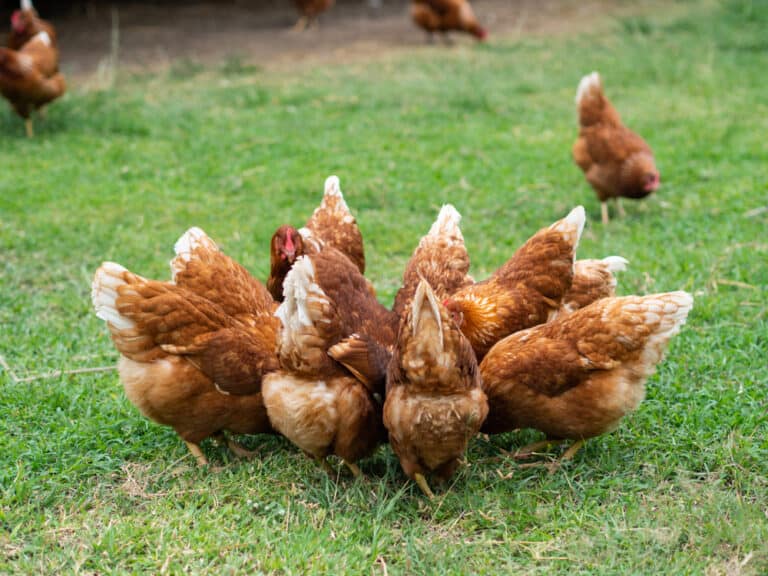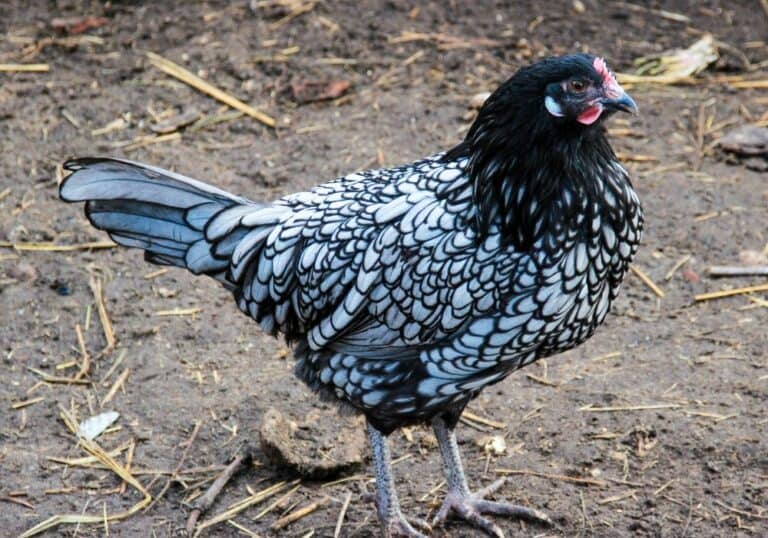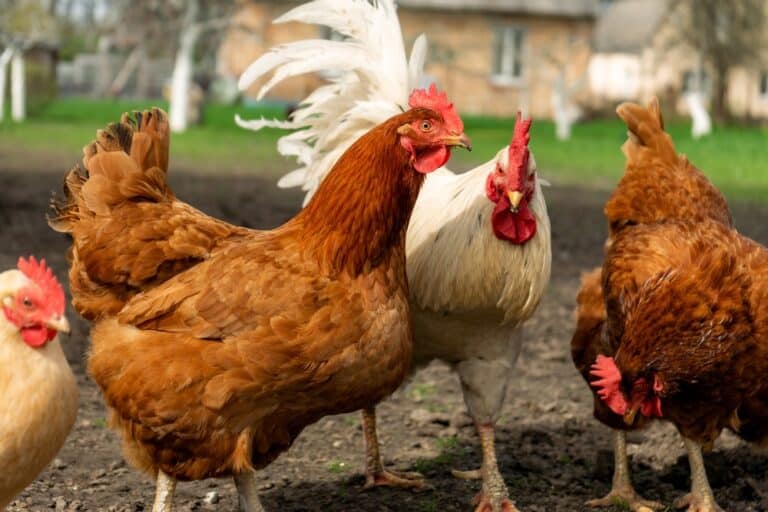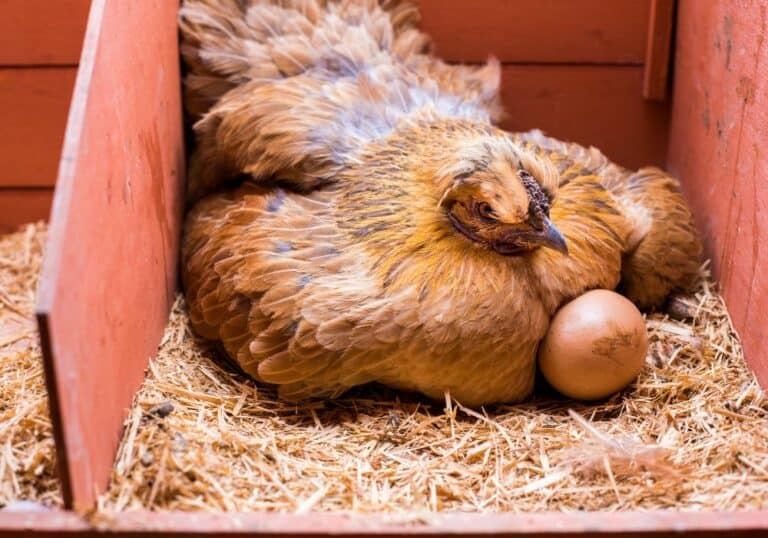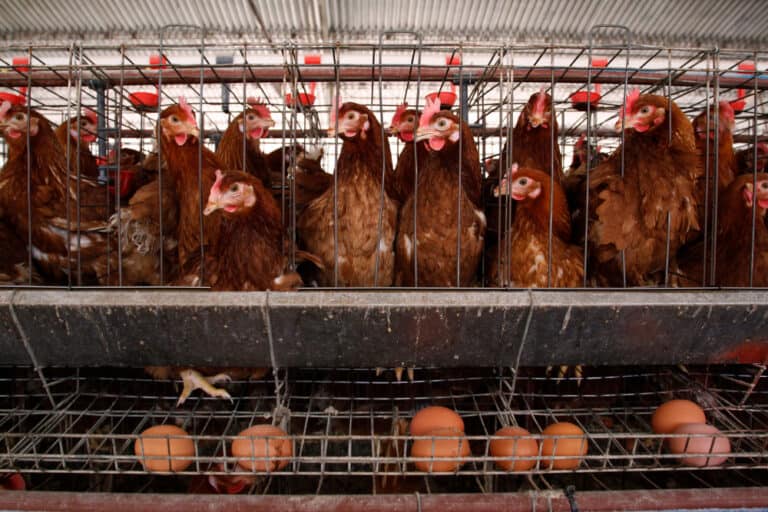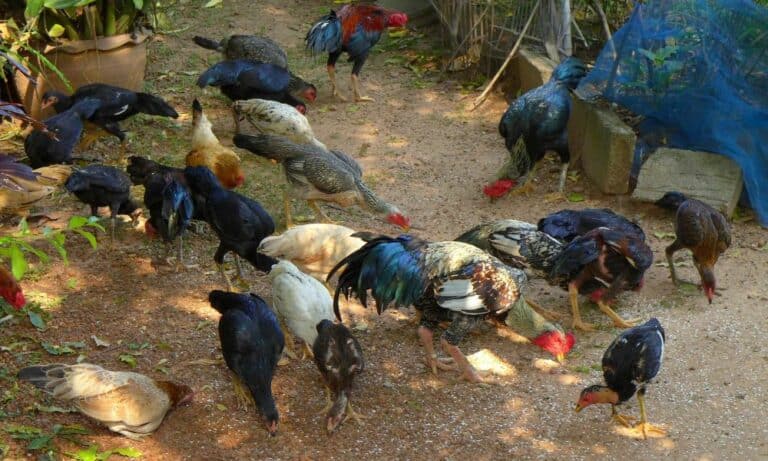Are you looking to breed chickens or simply curious about how we end up with little baby chicks? Whatever the reason, you’ve come to the right place. Here we’ll answer the question of how chickens mate, along with much more.
We’ll see how they mate while looking at the basics of chicken reproduction, any common issues with chicken mating, and how you can ensure successful reading. All you need to do is read on to find out more!
How Do Chickens Mate?
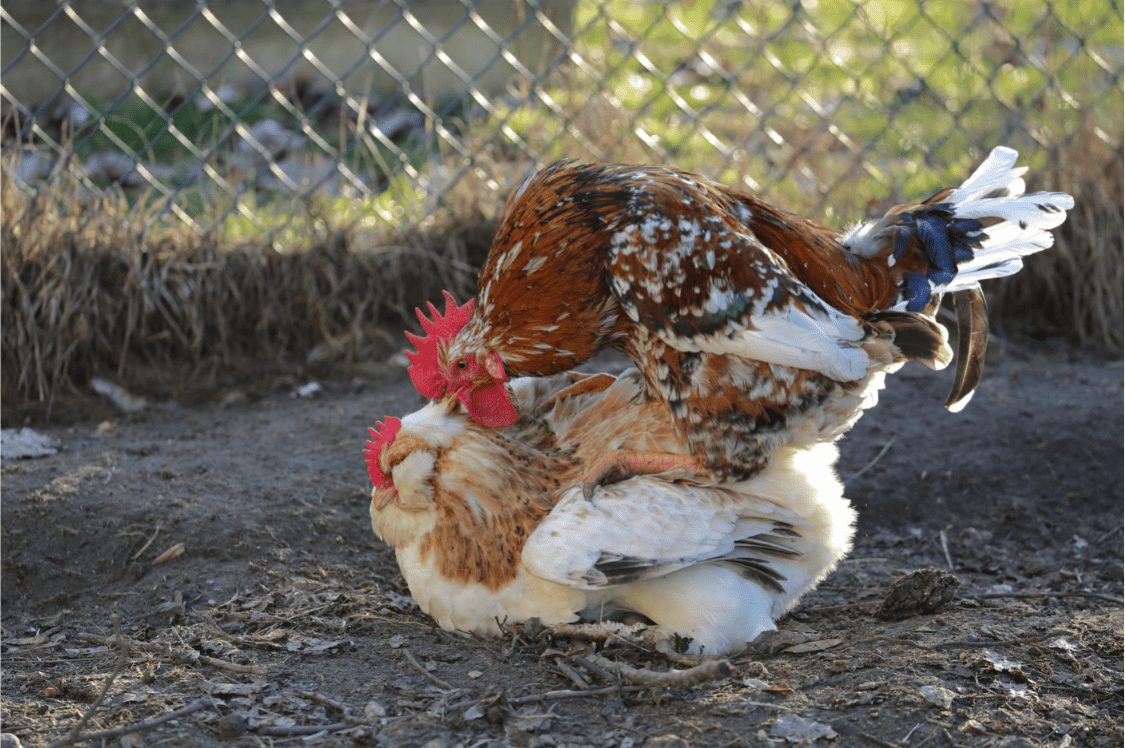
When it comes to the process of how chickens mate, it’s quite simple. Instead of having a penis to mate, both the hen and the rooster have what’s called a cloaca. The cloaca is just a fleshy opening that connects to its reproductive system.
They share this feature with many other animals across the world, including amphibians and reptiles. In order to mate, the rooster needs to sit on top of the hen. The hen will then squat down and wait for the rooster to position himself so that their cloacas meet.
The whole process is over very quickly as the rooster will release sperm from his papilla, which sits just inside his cloaca. When he does, the sperm will enter the hen’s cloaca before going down her reproductive tract.
The Basics of Chicken Reproduction
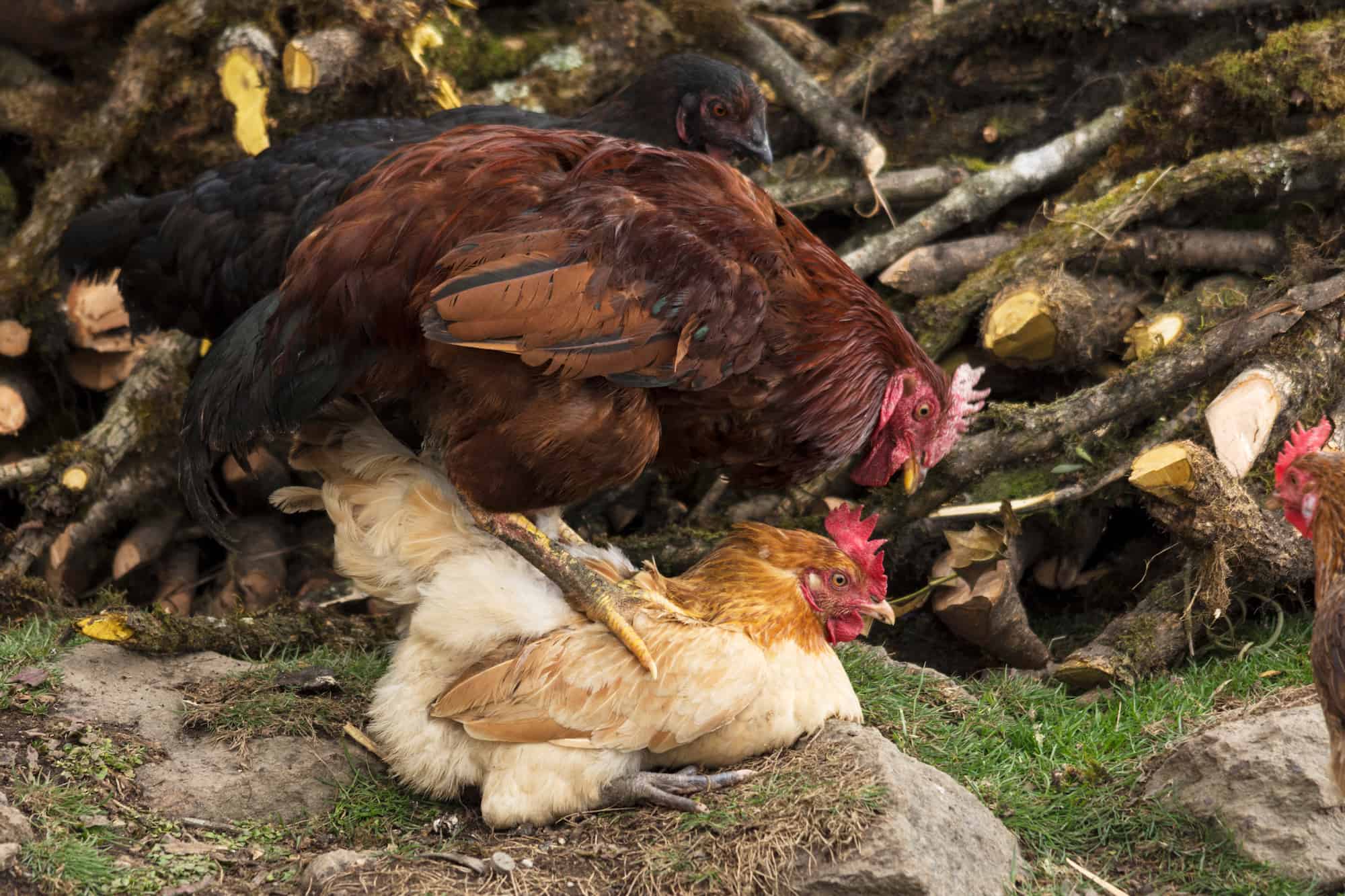
Of course, female humans have three holes in which to deliver babies, urinate, and defecate. In hens, this all comes out of the cloaca. That may sound a little disgusting but the cloaca is the name for the opening, and their digestive and reproductive systems are completely separate.
When the sperm enters the cloaca, it will enter the same reproductive tract that eggs exit from. A hen creates egg yolks which are periodically released, at a rate of one per day. If there is sperm present, then it will fertilize this egg yolk.
Interestingly, the sperm from a rooster can stay alive for five days which means that a hen doesn’t need to constantly mate to fertilize her eggs. It’s also important to note that these yolks are released whether there is sperm present or not. This is why you don’t need a rooster for a hen to lay eggs.
Once fertilized, the yolk will travel slowly down the oviduct tract. As it does, it will start to get a layer of albumen, which we know as egg whites. Then it will develop a membrane that encases the albumen and yolk. Further down, calcium still starts to form on this outer layer, which eventually becomes the shell.
Depending on the breed of chicken, the whole process will take a little over 24 hours. Most of this time (around 20 hours) is spent with the egg in the uterus where it develops its shell. Once the shell is complete, the hen lays the egg through the cloaca. It will take approximately 21 days for the chick to hatch.
Chicken Mating Ritual
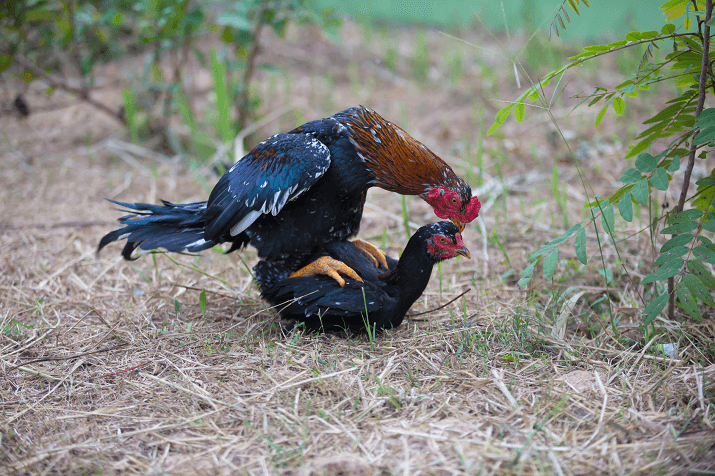
Chickens generally don’t have a complex mating ritual, especially when compared to other animals. There are times when a rooster will simply jump on the hen and mate her without any preamble or prior effort.
Roosters are always ready to mate and can do so an impressive 10 to 30 times per day. However, there are times when the rooster will try and entertain its female companion. This often can be just time strutting around whereas other times it can be a little more complex.
There are dances that some roosters can do, and there may be other times when he’ll bring her food. These rituals can vary from one breed of chicken to the next, but they usually aren’t prolonged or too elaborate.
Common Issues with Chicken Mating

It isn’t difficult to get chickens to breed, and they will happily do so. All you need is a rooster and a hen and they’ll do the rest. However, there are a few potential issues to look out for.
- Injuries – The hen can get injured during the mating process. This is because the rooster needs to jump on her back. Roosters are bigger and more aggressive than hens, so it’s no surprise that sometimes they can become wounded.
This damage is usually minor, but it can lead to bald spots and lost feathers. At worst, the hen can be cut by the rooster’s claws. If you have a hen that is prone to these types of injuries, then you can fit them with a chicken saddle, which is a soft cloth that protects their backs.
- Rooster aggression – Roosters can attack each other during the mating process. This type of aggressive behavior is common in animals but the solution is simple. This aggression is always caused by not having enough hens. Either add more hens or take away a rooster. A ratio of ten hens to every rooster should be fine.
- Attachment issues – There can also be a potential issue if you have a hen that is particularly fluffy. Their feathers can get in the way and effectively block the sperm from getting into the cloaca. If you think this is a problem, then you can trim away some of their feathers.
- Age – It will be obvious to some, but a hen will retire from laying eggs later in life. This varies between breeds, but it’s usually at five years old. If you have a hen that is past this age, then it’s unlikely she’ll produce eggs.
Tips to Ensure Successful Breeding
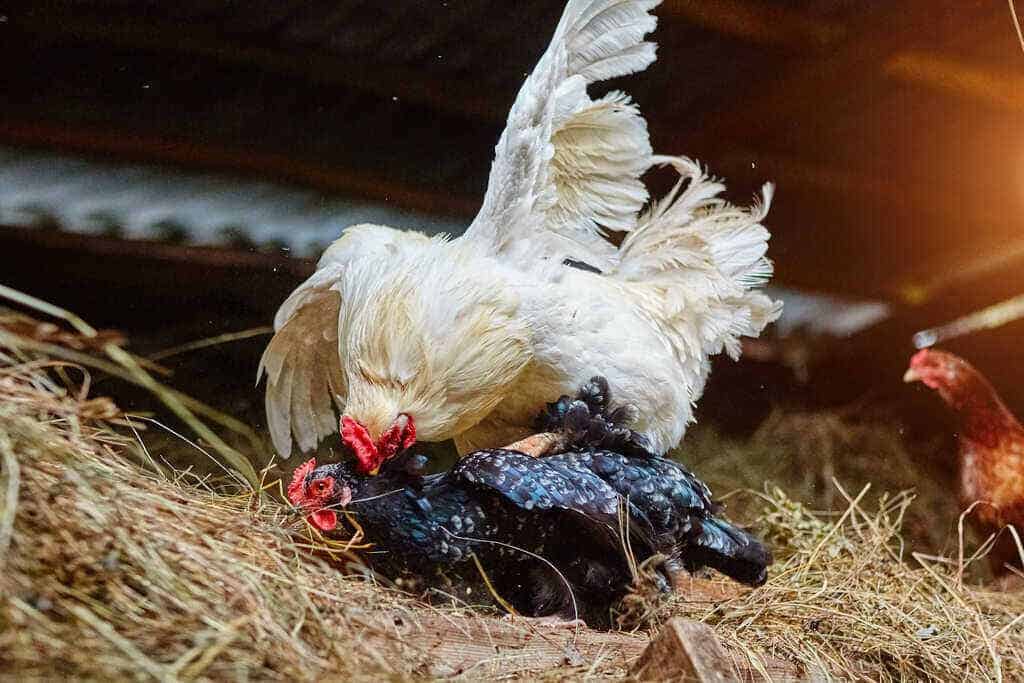
If you’re interested in breeding chickens, then it’s not too difficult. But here are a few tips to get started.
- Selective Breeding – You don’t want to breed through genetic diseases or defects. It’s important to only breed one healthy chicken with another.
- Nutrition – Healthy birds are going to make healthy eggs. Ensure they have a high-quality and balanced diet. If they are prolific egg layers, then it also makes sense to add calcium to their diet.
- Check for Injuries and Behavior – With mating, you want to check on any potential injuries that occur with the hens and any aggressive behavior. You need to take steps to address any issues, such as adding more hens to your flock, adding more nesting boxes, or protecting your hens from roosters.
- Collect Eggs Regularly – Even if you have a broody hen, it’s best to collect the eggs often. Putting them in an incubator will give them a better chance of being hatched and it also prevents any accidents, such as a hen breaking the egg.
A hen that is laying on an egg also won’t produce any more eggs until they hatch. If you wanted even more chicks, or to use extra eggs for food, then they also need to be taken away for this reason.
- Stop Inbreeding – If a small flock is left to its own devices, inbreeding can occur. As with almost all animals, this can lead to a variety of health problems.
How Do Chickens Mate? – FAQs
1. How does a rooster fertilize an egg?
A rooster fertilizes an egg by pressing his cloaca against the cloaca of a hen. He will then release sperm which travels up her reproductive tract until it fertilizes with a yolk. An egg can only be fertilized when it’s at the very beginning of its cycle. A hardened egg cannot be fertilized.
2. How do chickens lay eggs without a male?
A female chicken will create a yolk in her ovary. This then passes through the oviduct where it will receive the outer albumen layer, before being covered in calcium deposits. This process happens with or without a male.
3. Do chickens mate or just lay eggs?
They mate. It’s easy for people to get confused as they see a perfectly formed egg and presume that you can get a chick from it. However, chicks can only ever come from fertilized eggs. If a rooster isn’t present, then any egg a hen lays will not turn into a chick, even if incubated.
4. Do chickens have one or two holes?
One, and it’s called a cloaca. While only having one whole, the cloaca isn’t very long and is immediately connected to three other passageways for eggs, feces, and urine. So, while they only have one while, it quickly splits off.
5. Why do hens run before mating?
A hen will run when it doesn’t want to be mated. It’s not known exactly why they won’t want to mate at any given time, but it could be because they are not ovulating, may be in poor condition, or could be hurt by previous mating attempts.
Conclusion
Hopefully, by now you have all the information you need about chicken mating. Many are initially confused by the process as they presume all eggs can be hatched but as you’ve seen, it’s all a simple process of a rooster’s sperm fertilizing a hen’s yolk.
The production of an egg will happen regardless of whether a rooster is present. If you wanted to breed chickens, then add a rooster to your flock and make sure to incubate and follow our advice and tips.

